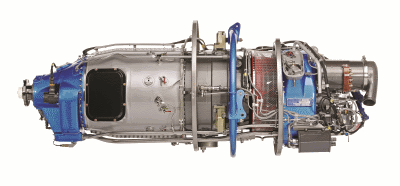Wed, Aug 18, 2021
AD 2021-15-10 Prompted By Several Reports Of Engine Gas Generator Speed (Ng) Rollbacks
The FAA is adopting a new airworthiness directive (AD) for all GE Aviation Czech s.r.o. (GEAC) H75-200, H80-100, and H80-200 model turboprop engines.

This AD was prompted by several reports of engine gas generator speed (Ng) rollbacks occurring below idle on GEAC H75-200, H80-100, and H80-200 model turboprop engines. This AD requires an inspection of a certain part number (P/N) fuel control unit (FCU) and, if deficiencies are detected, replacement of the FCU with a part eligible for installation. The FAA is issuing this AD to address the unsafe condition on these products. This AD is effective September 21, 2021.
Supplementary Information: The FAA issued a notice of proposed rulemaking (NPRM) to amend 14 CFR part 39 by adding an AD that would apply to all GEAC H75-200, H80-100, and H80-200 model turboprop engines. The NPRM published in the Federal Register on April 20, 2021 (86 FR 20465). The NPRM was prompted by several reports of engine gas generator speed (Ng) rollbacks occurring below idle on GEAC H75-200, H80-100, and H80-200 model turboprop engines. The NPRM proposed to require an inspection of a certain P/N FCU and, if deficiencies are detected, replacement of the FCU with a part eligible for installation. The FAA is issuing this AD to address the unsafe condition on these products.
The European Union Aviation Safety Agency (EASA), which is the Technical Agent for the Member States of the European Community, has issued EASA AD 2020-0082, dated April 1, 2020 (referred to after this as “the MCAI”), to address the unsafe condition on these products.
The MCAI states:
- Several occurrences have been reported of engine gas generator speed (Ng) rollbacks below idle on engines equipped with an affected part.
- The investigation determined that, during these events, the engine control lever (ECL) was set to idle, and identified as contributing factors specific environmental temperatures, possibly in combination with a high power off-take. The idle setting may be used in flight, in particular during the approach phase.
- This condition, if not detected and corrected, may lead to loss of engine power and eventually, on a single engine aeroplane, possibly result in loss of control.
- To address this potential unsafe condition, GEAC issued the ASB providing applicable instructions.
You may obtain further information by examining the MCAI in the AD docket at https://www.regulations.gov by searching for and locating Docket No. FAA-2021-0316.
More News
He Attempted To Restart The Engine Three Times. On The Third Restart Attempt, He Noticed That Flames Were Coming Out From The Right Wing Near The Fuel Cap Analysis: The pilot repor>[...]
Make Sure You NEVER Miss A New Story From Aero-News Network Do you ever feel like you never see posts from a certain person or page on Facebook or Instagram? Here’s how you c>[...]
From 2009 (YouTube Edition): Leading Air Show Performers Give Their Best Advice for Newcomers On December 6th through December 9th, the Paris Las Vegas Hotel hosted over 1,500 air >[...]
Aero Linx: NASA ASRS ASRS captures confidential reports, analyzes the resulting aviation safety data, and disseminates vital information to the aviation community. The ASRS is an i>[...]
“For our inaugural Pylon Racing Seminar in Roswell, we were thrilled to certify 60 pilots across our six closed-course pylon race classes. Not only did this year’s PRS >[...]
 NTSB Final Report: Rutan Long-EZ
NTSB Final Report: Rutan Long-EZ ANN FAQ: Turn On Post Notifications
ANN FAQ: Turn On Post Notifications Classic Aero-TV: ICAS Perspectives - Advice for New Air Show Performers
Classic Aero-TV: ICAS Perspectives - Advice for New Air Show Performers ANN's Daily Aero-Linx (06.28.25)
ANN's Daily Aero-Linx (06.28.25) Aero-News: Quote of the Day (06.28.25)
Aero-News: Quote of the Day (06.28.25)



